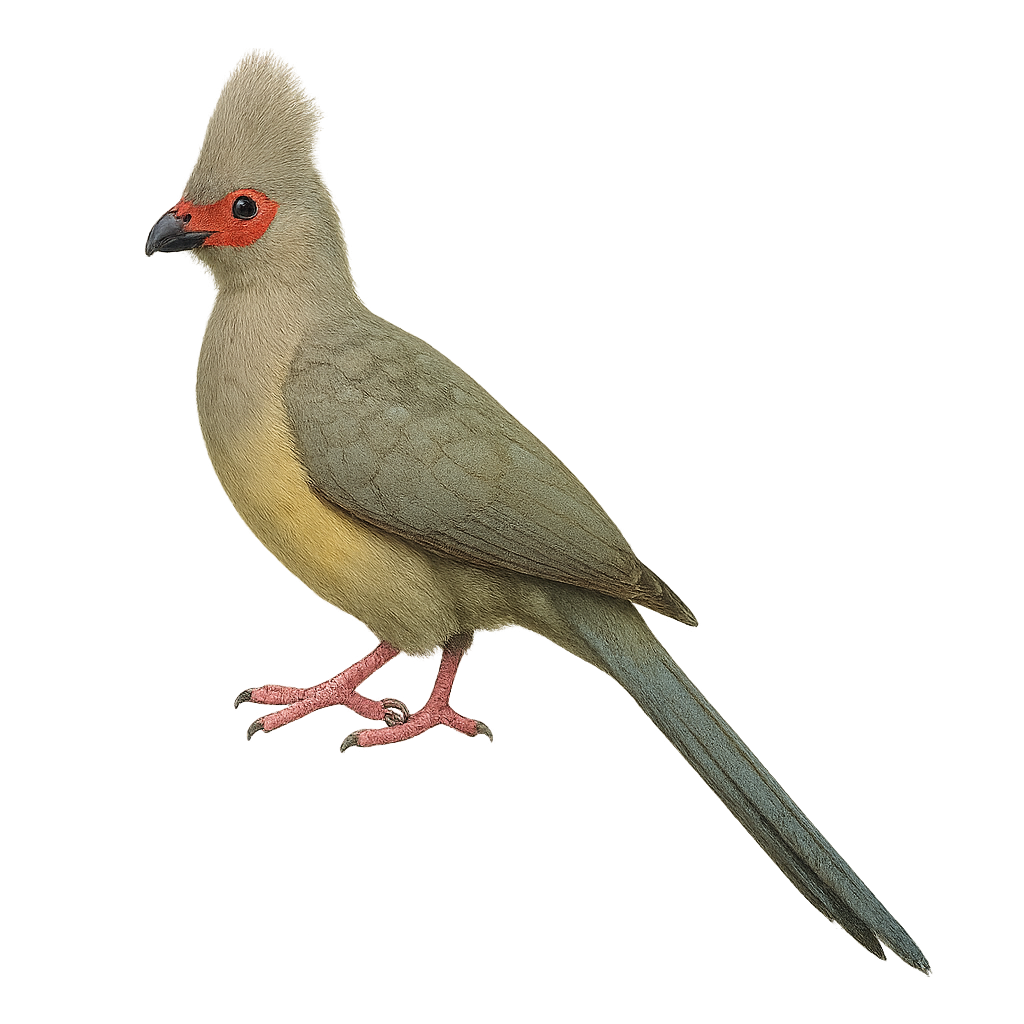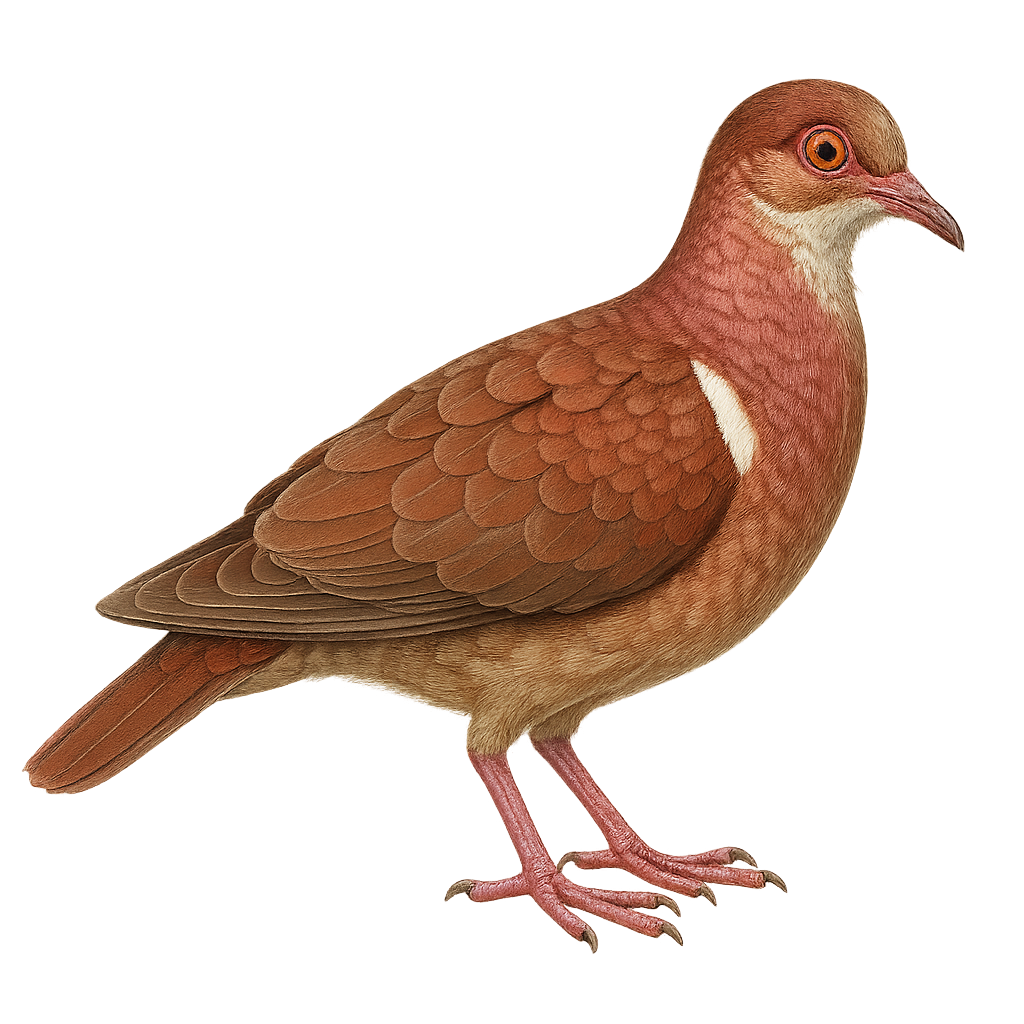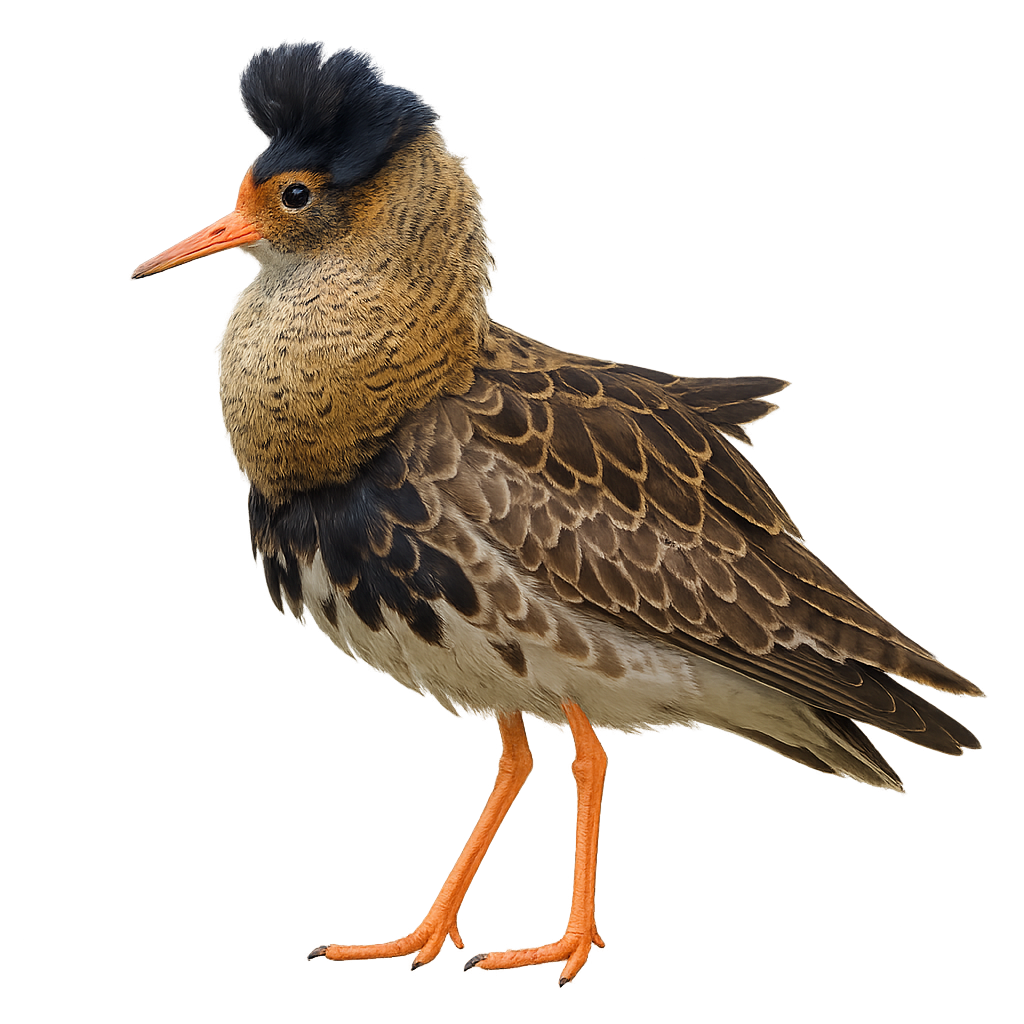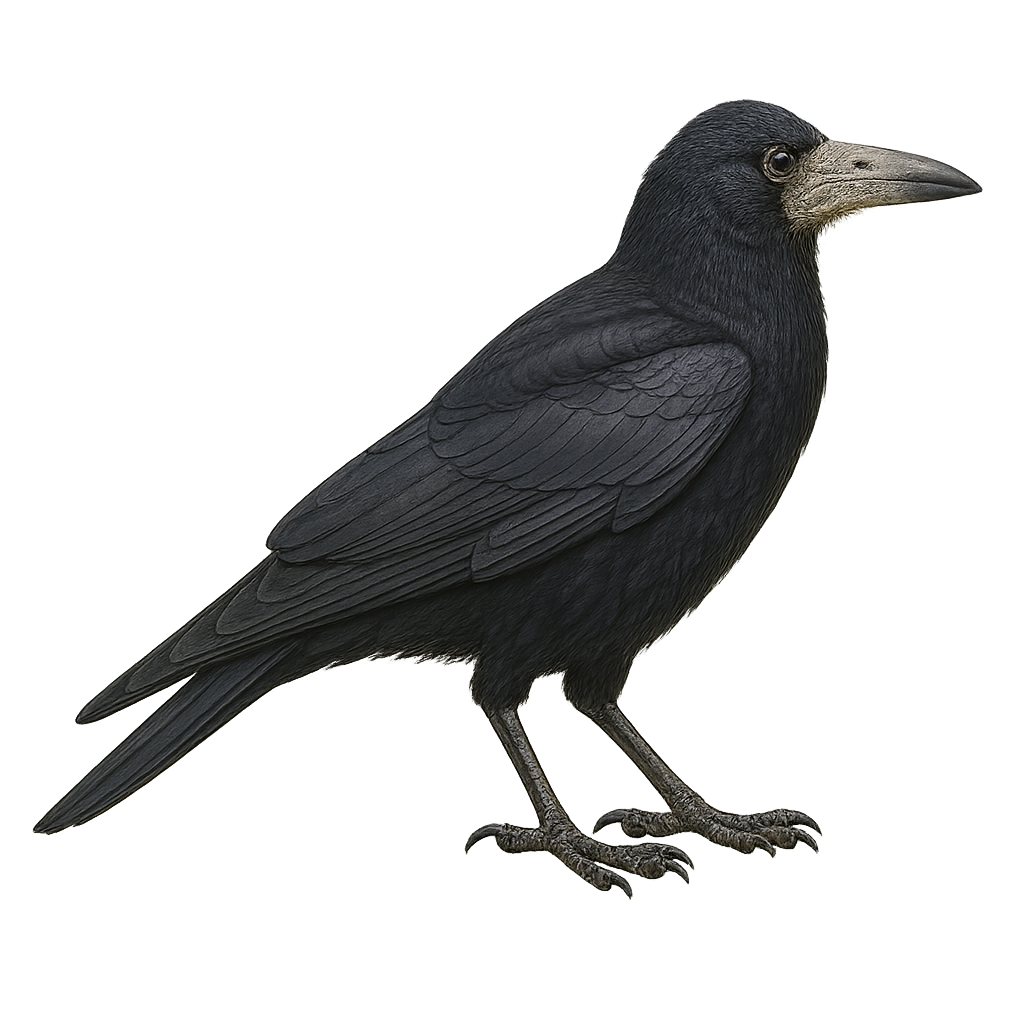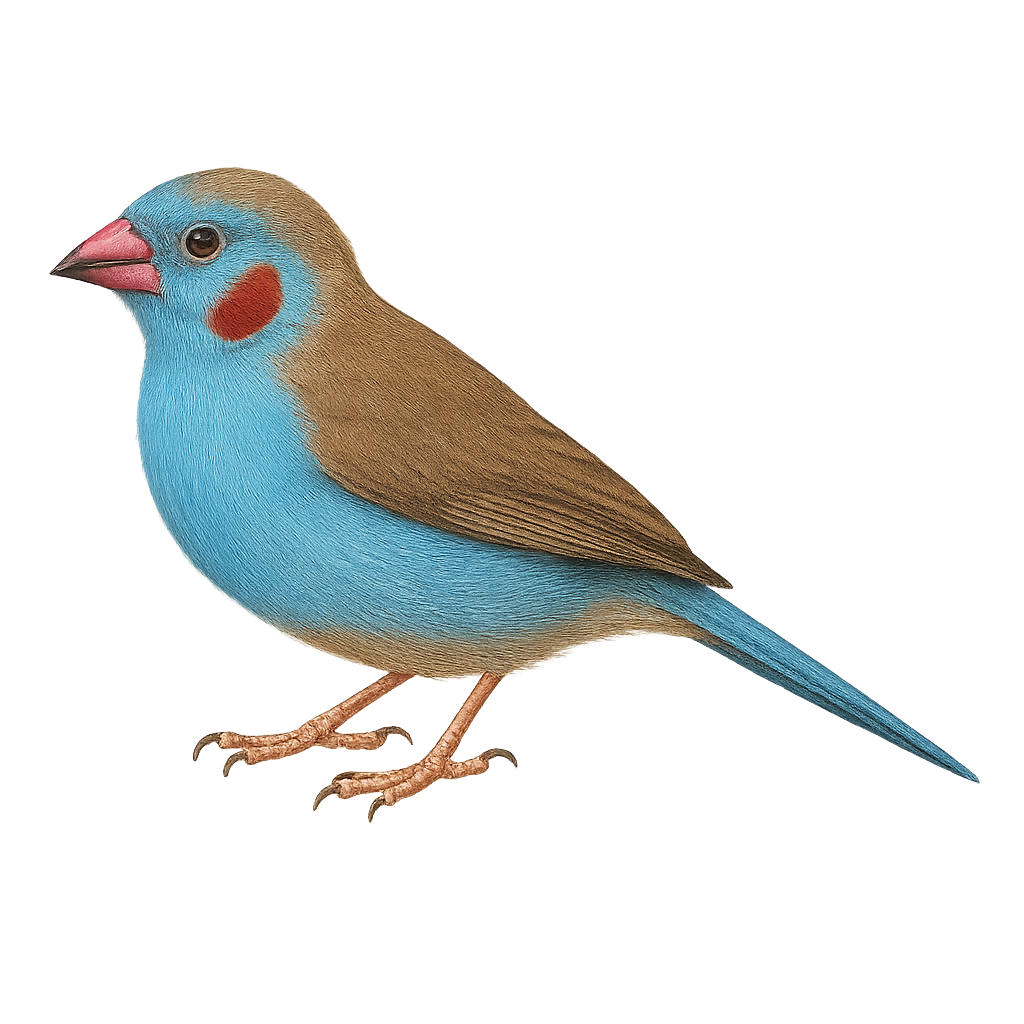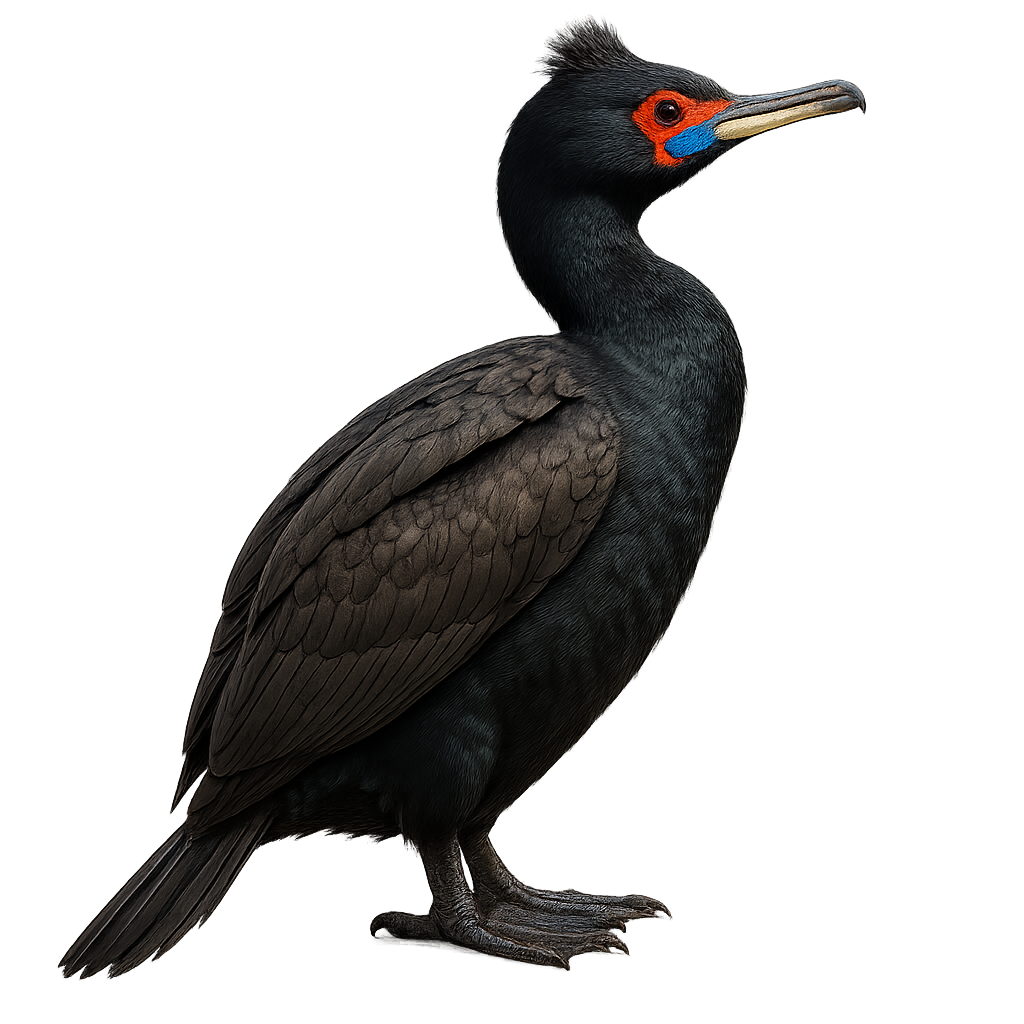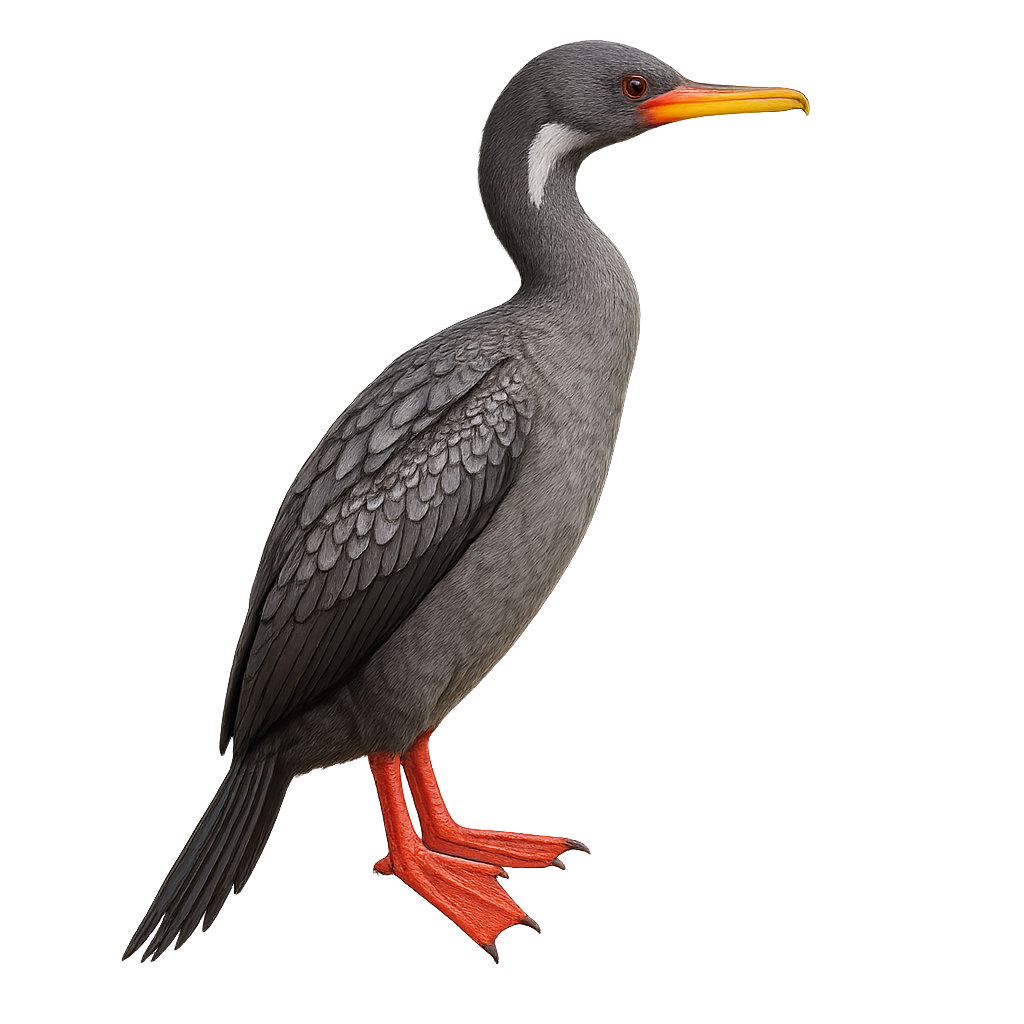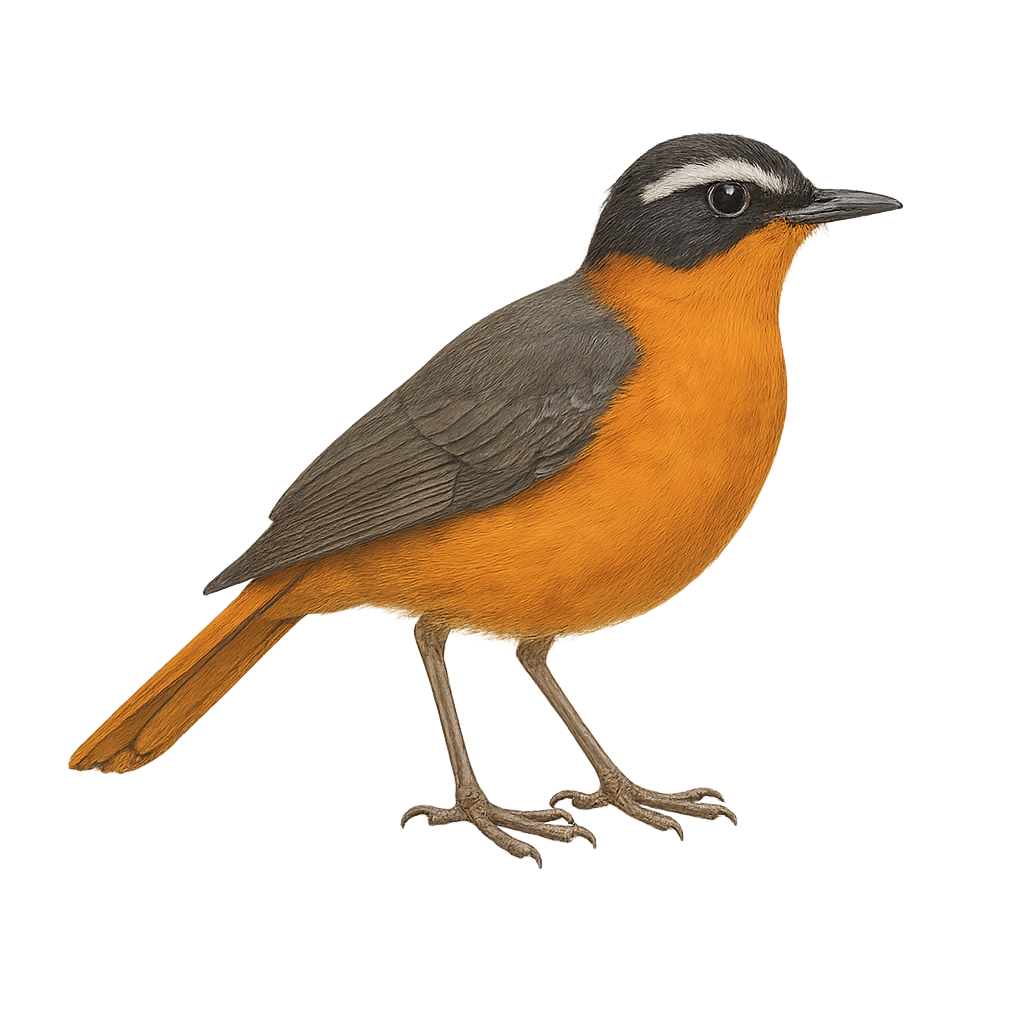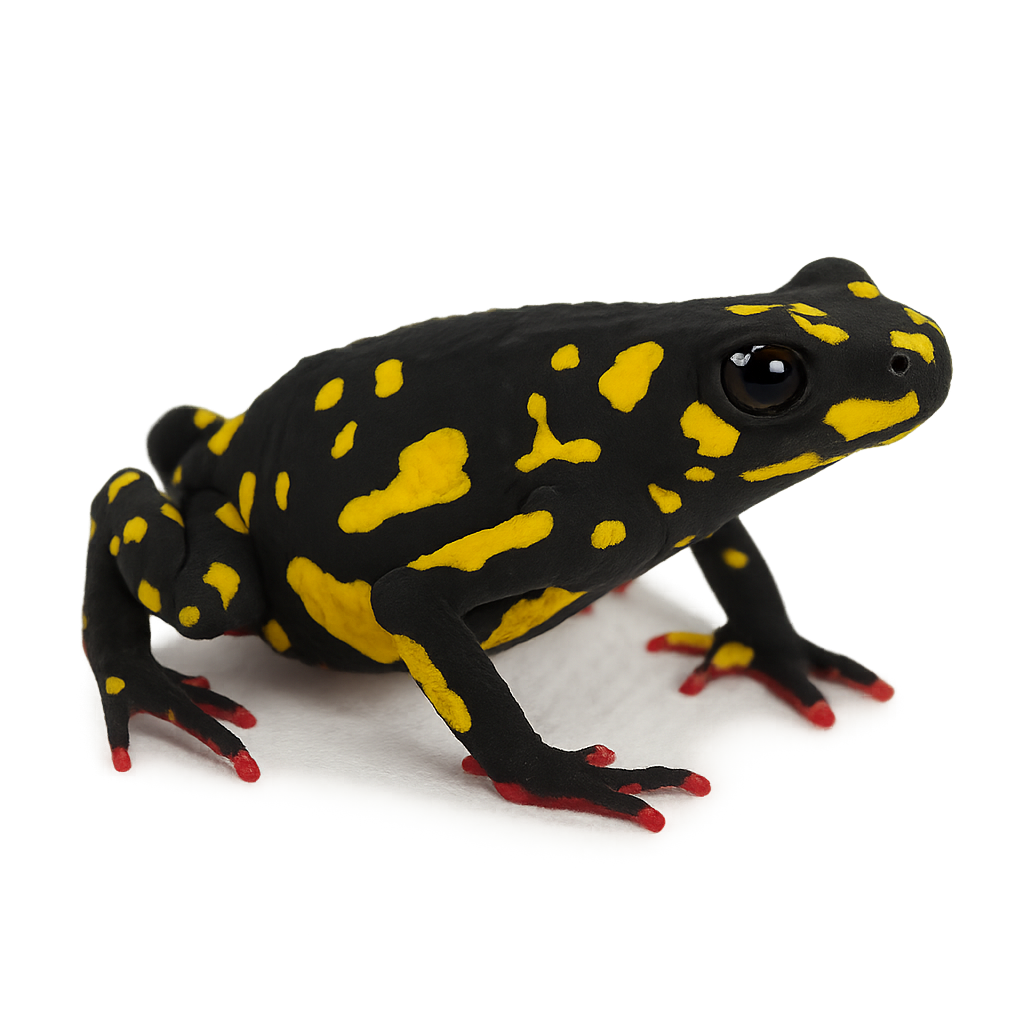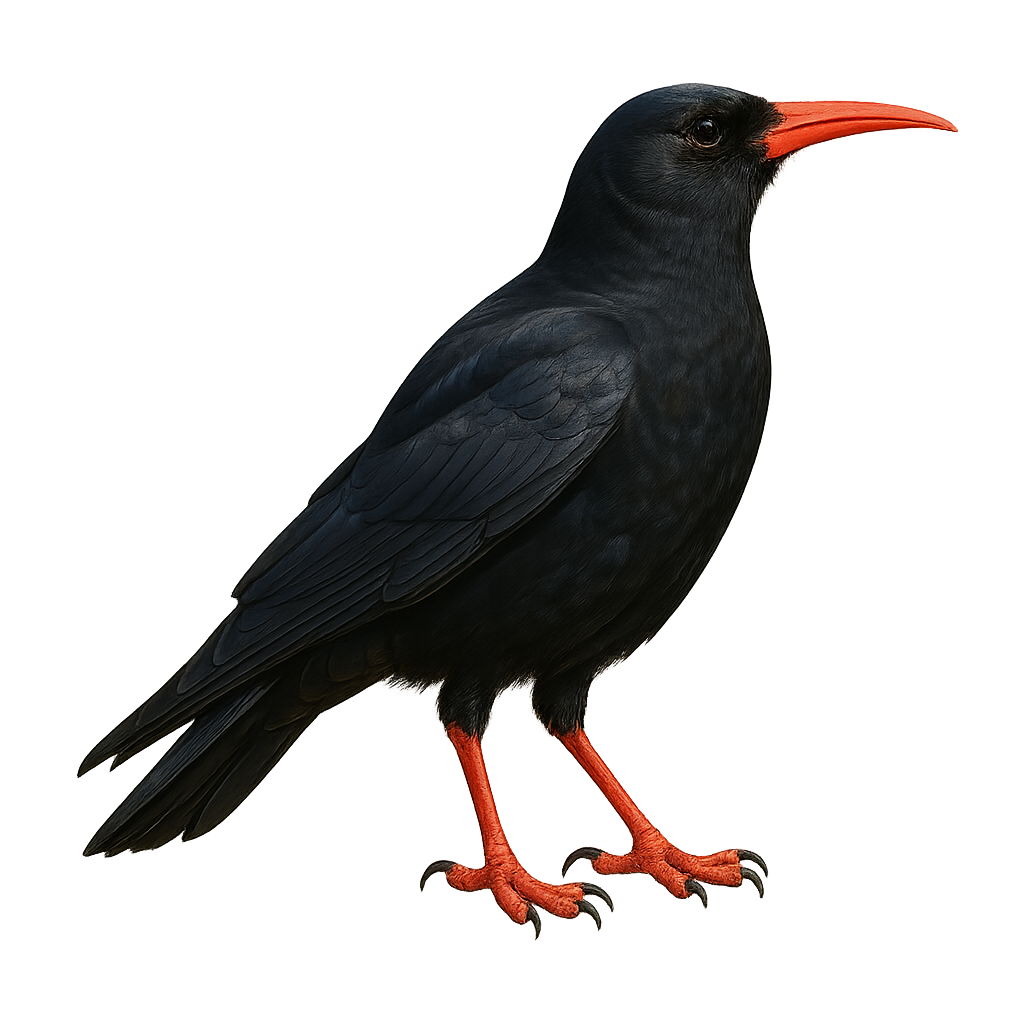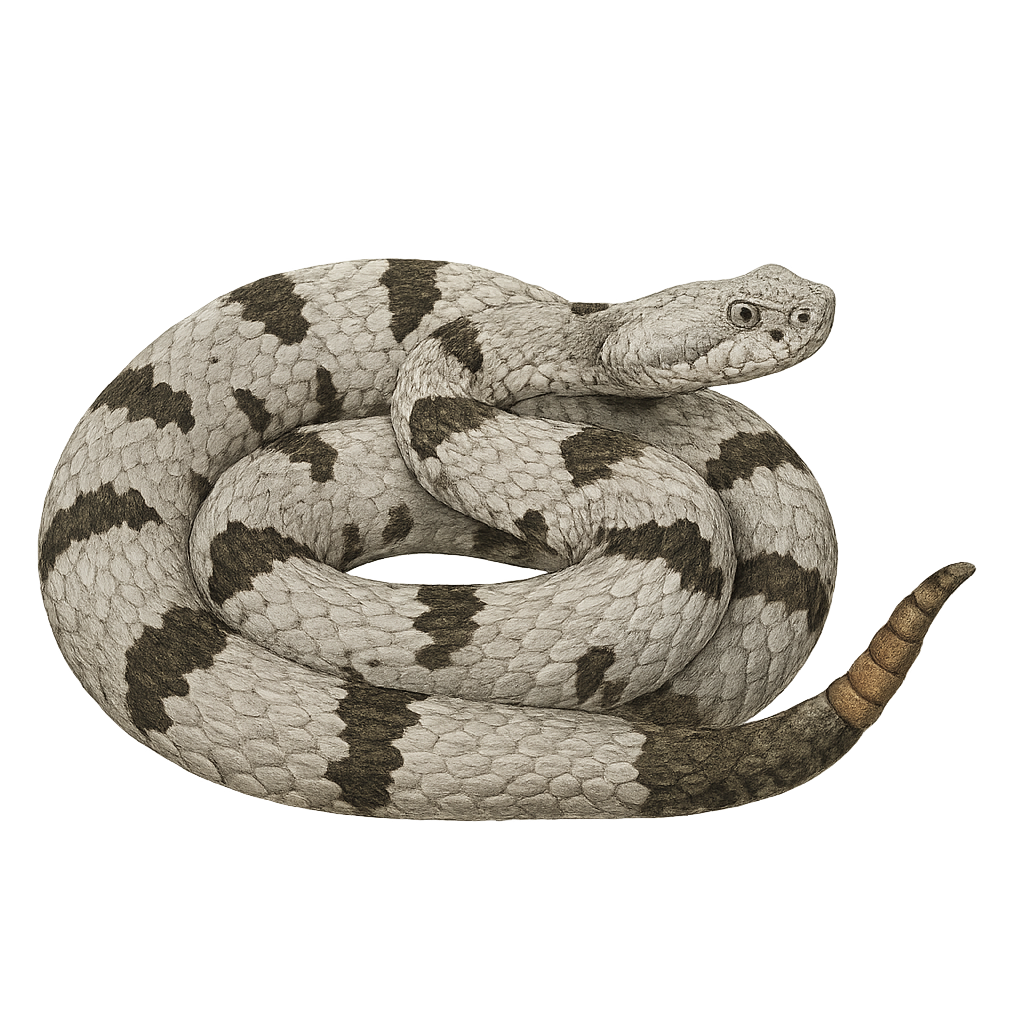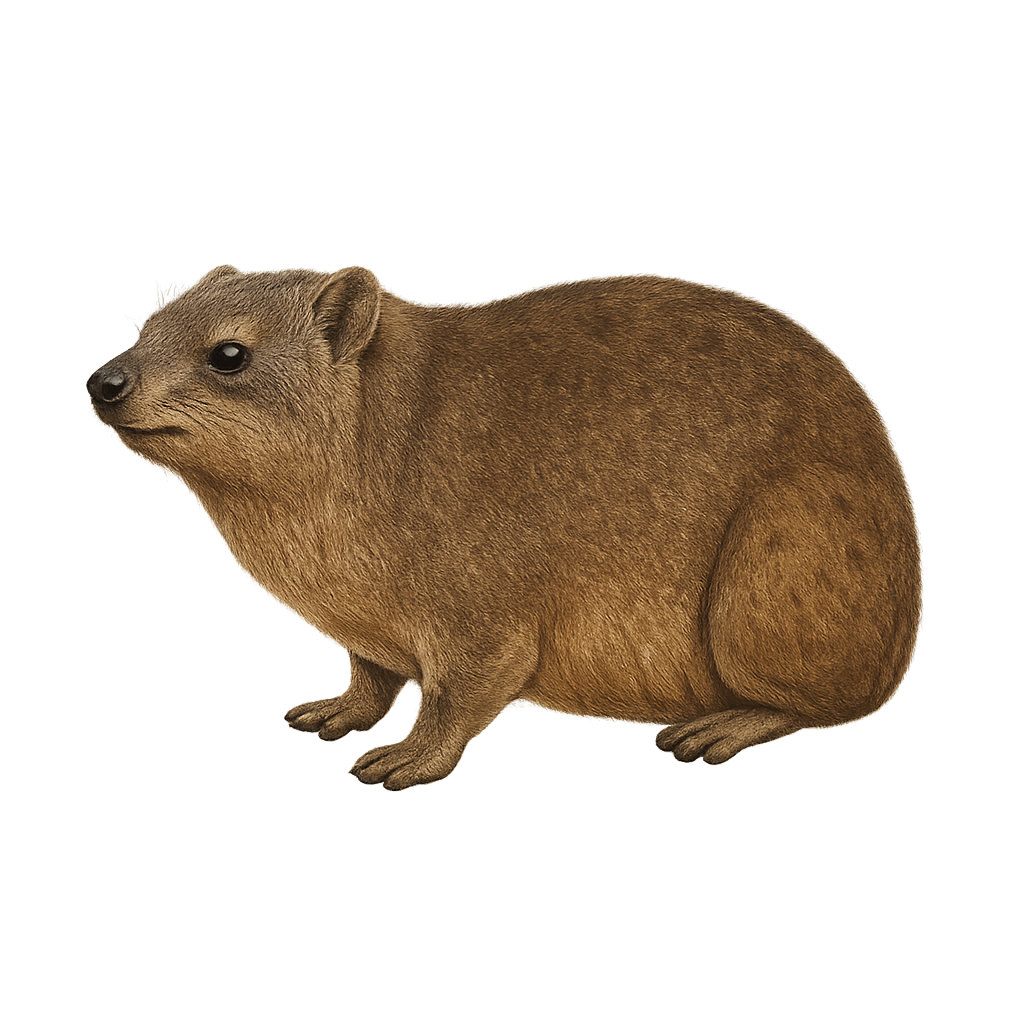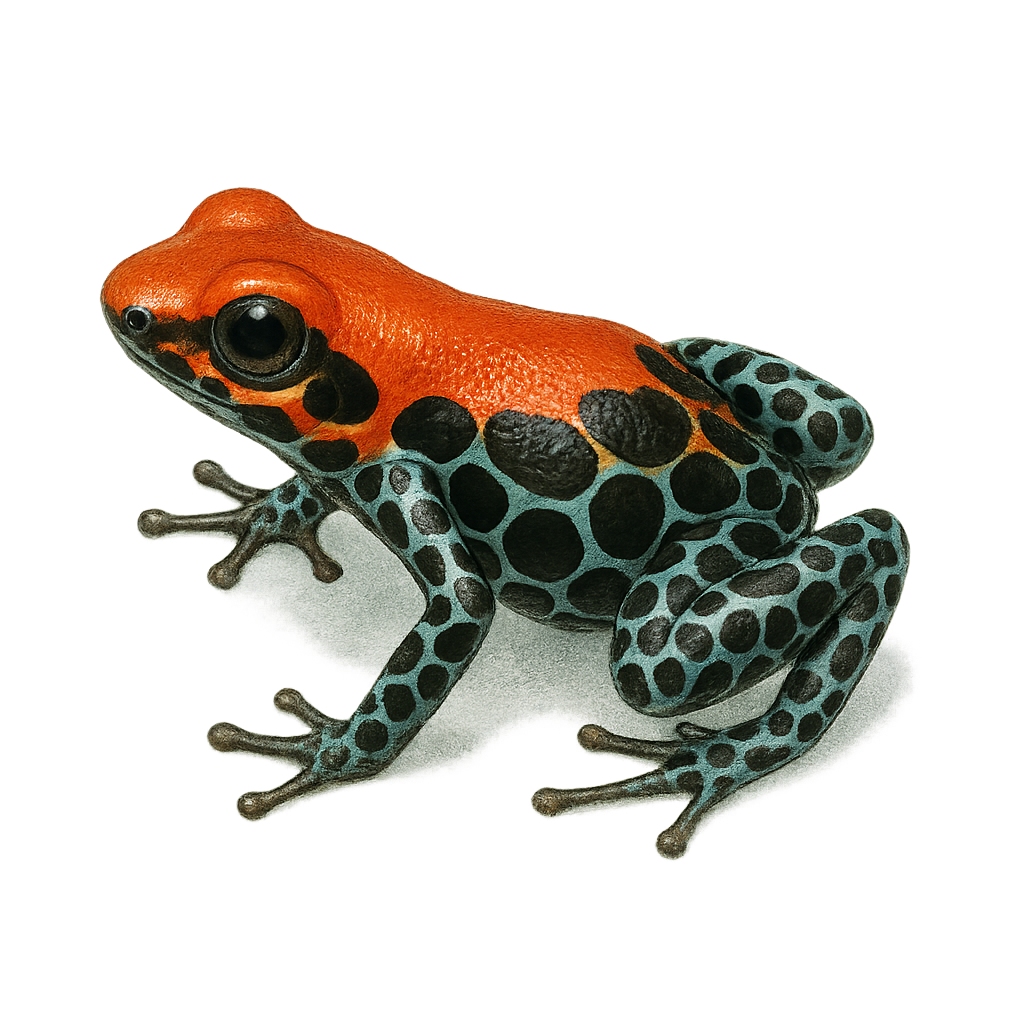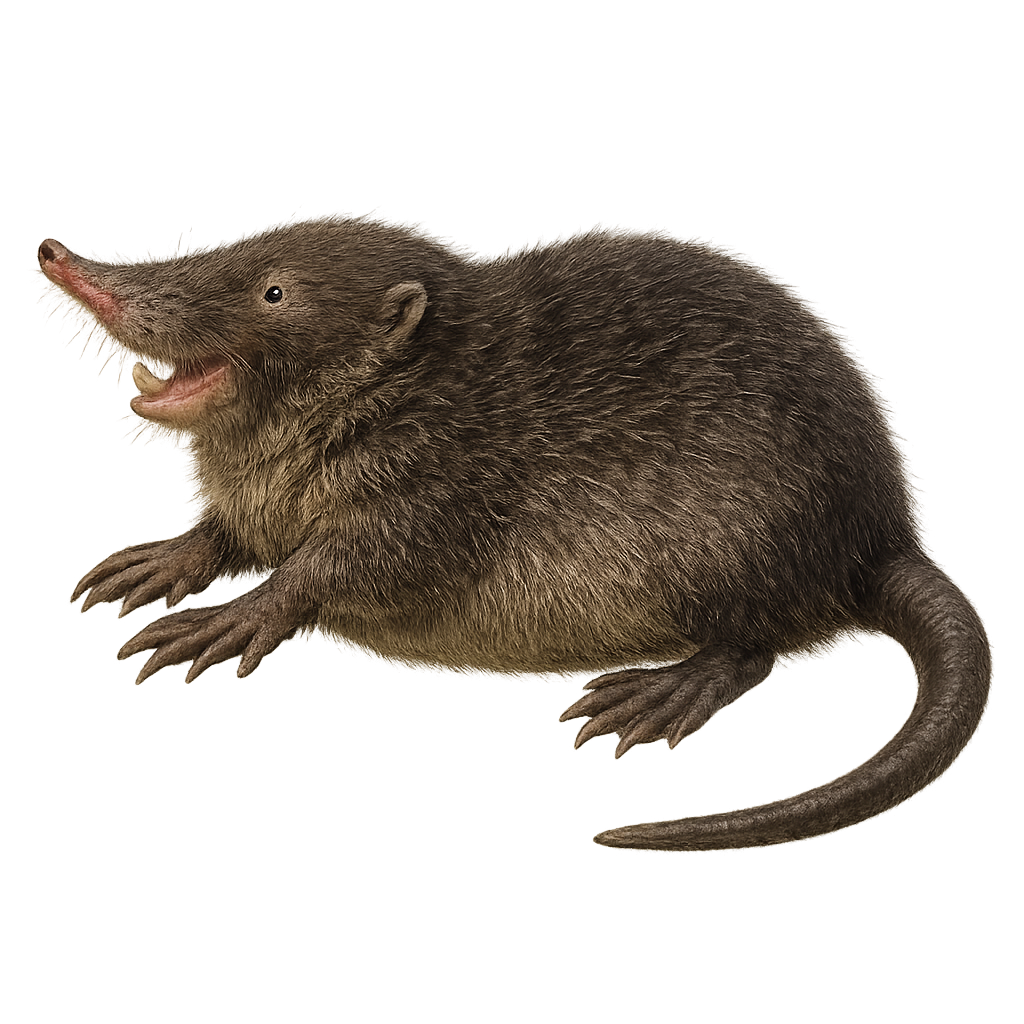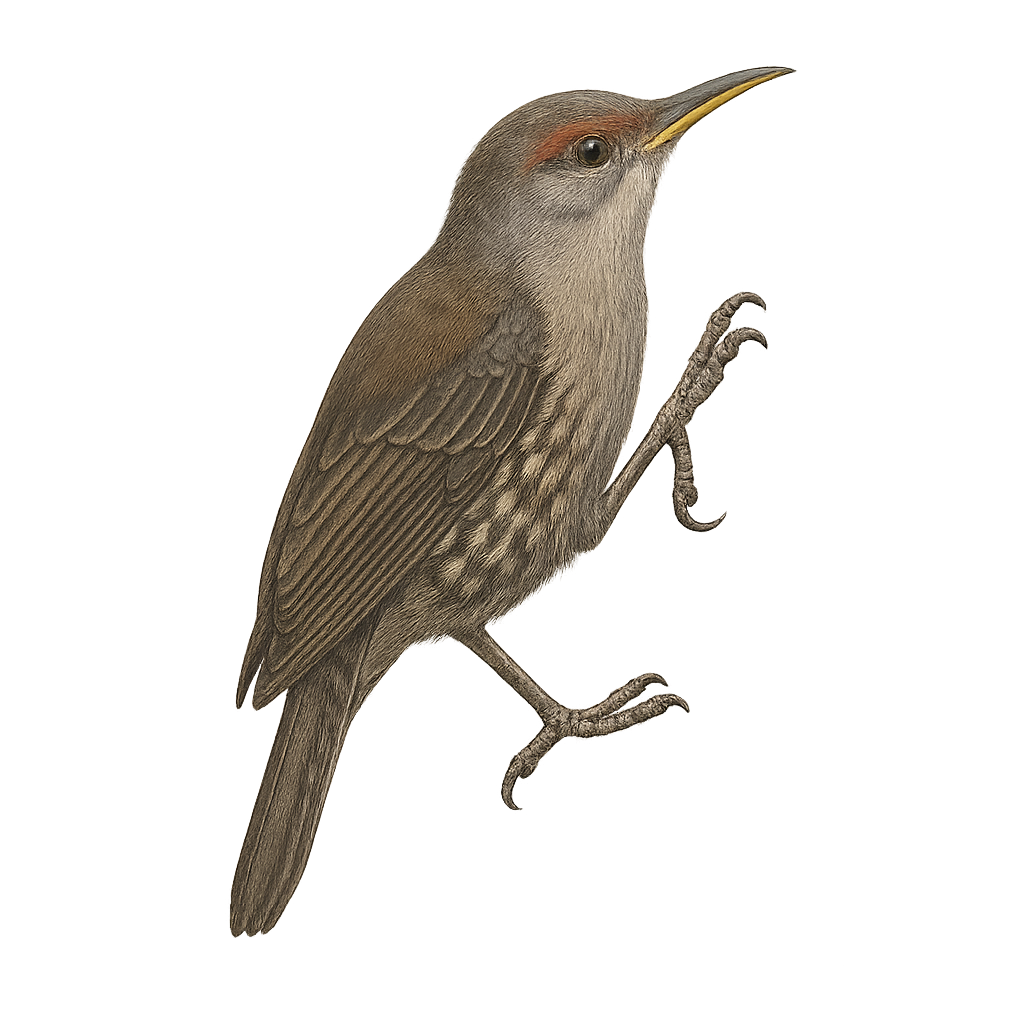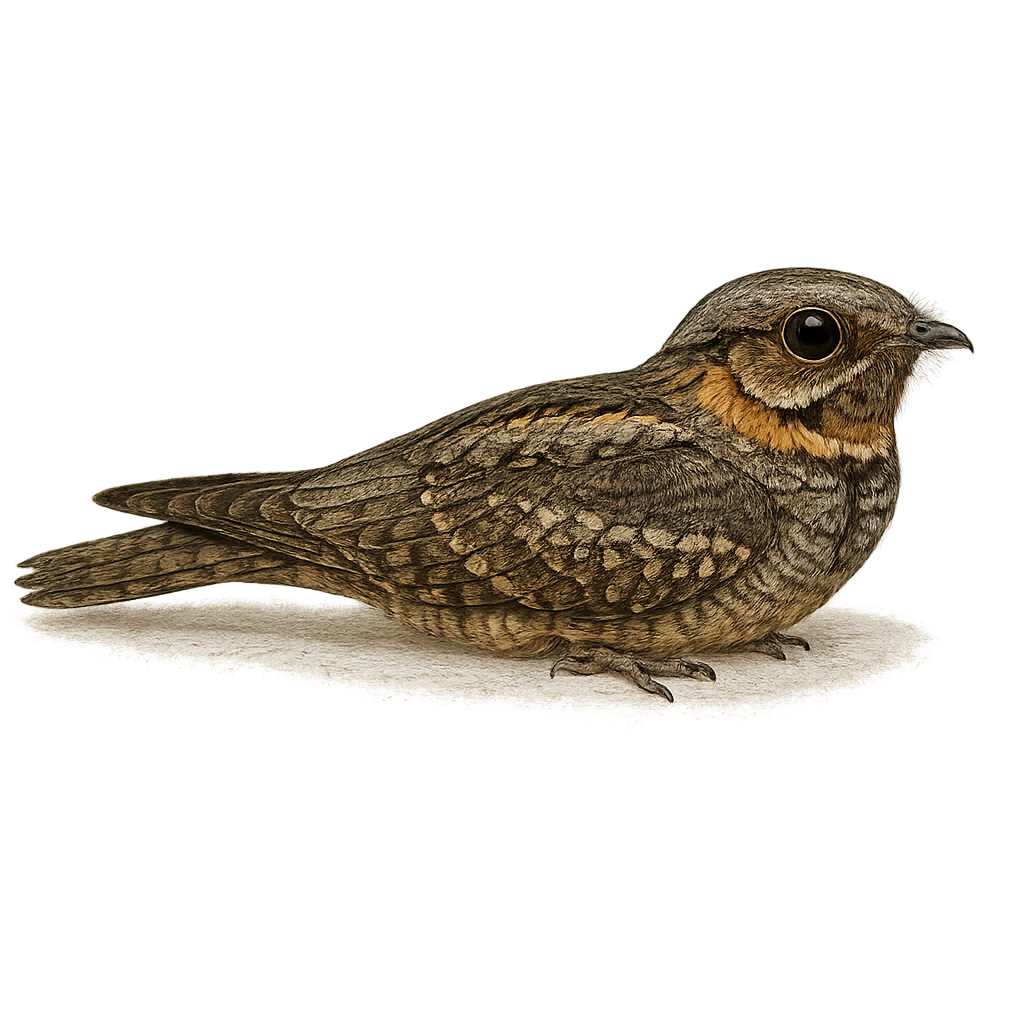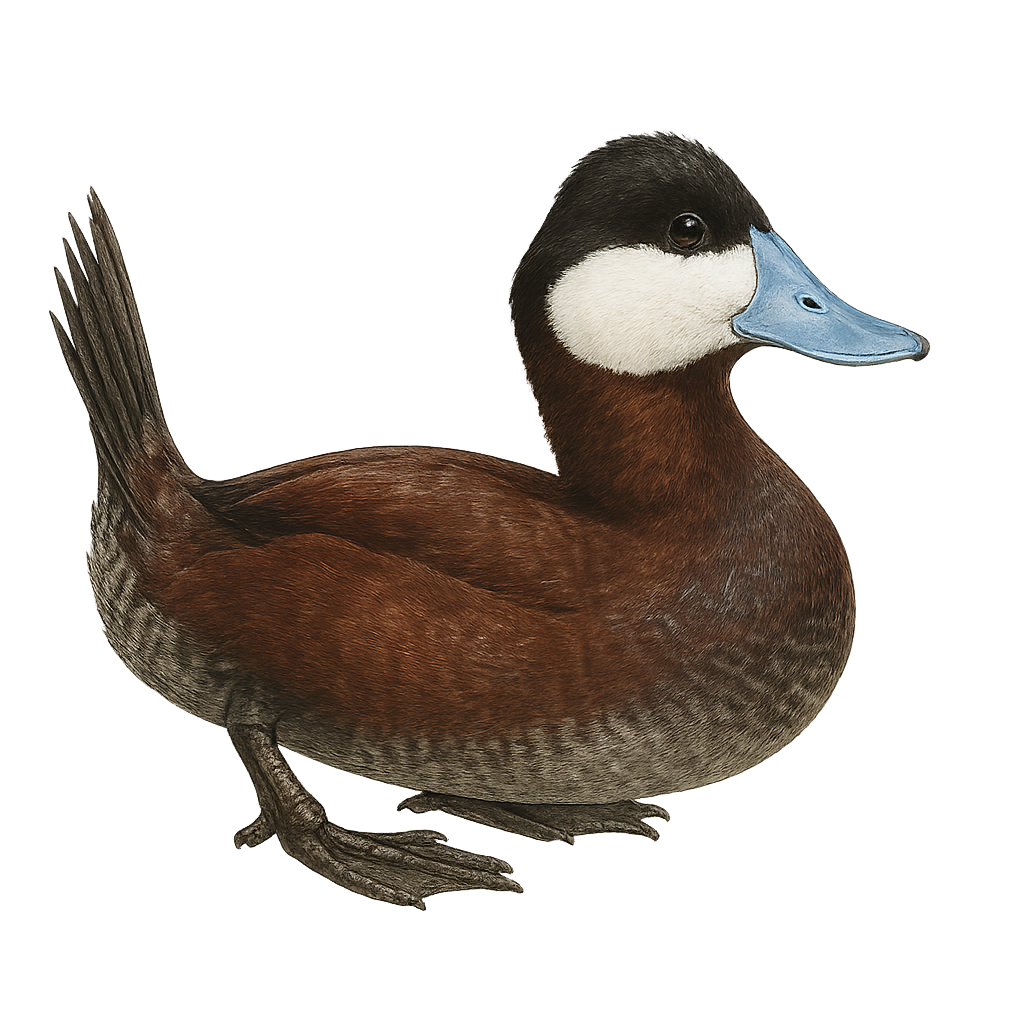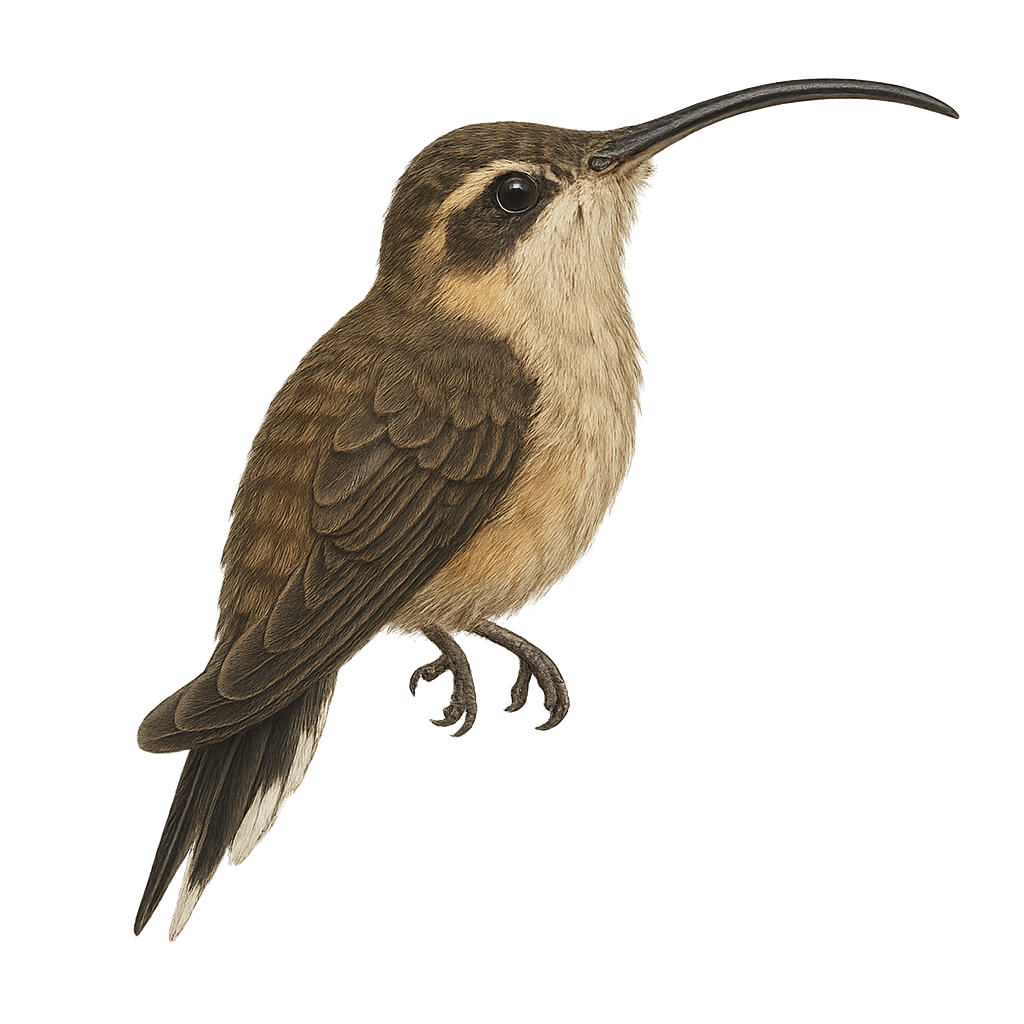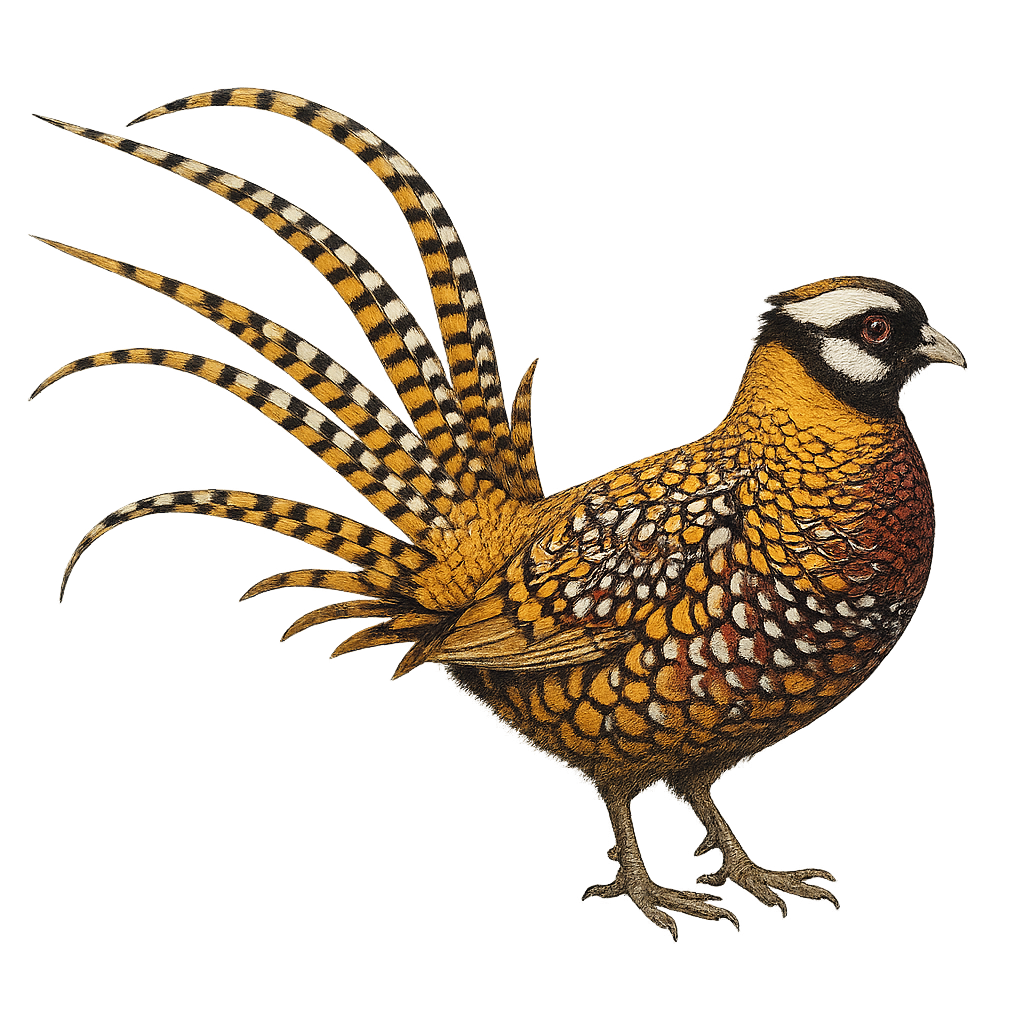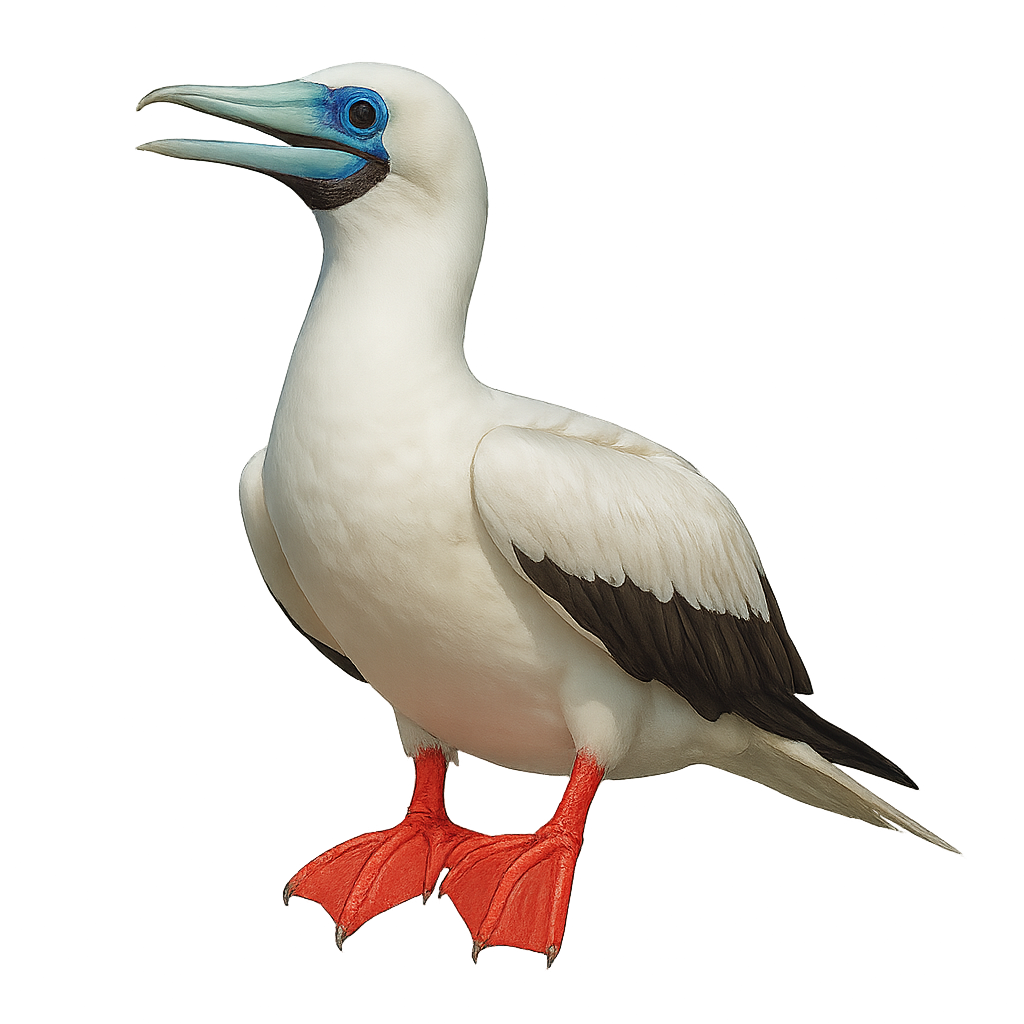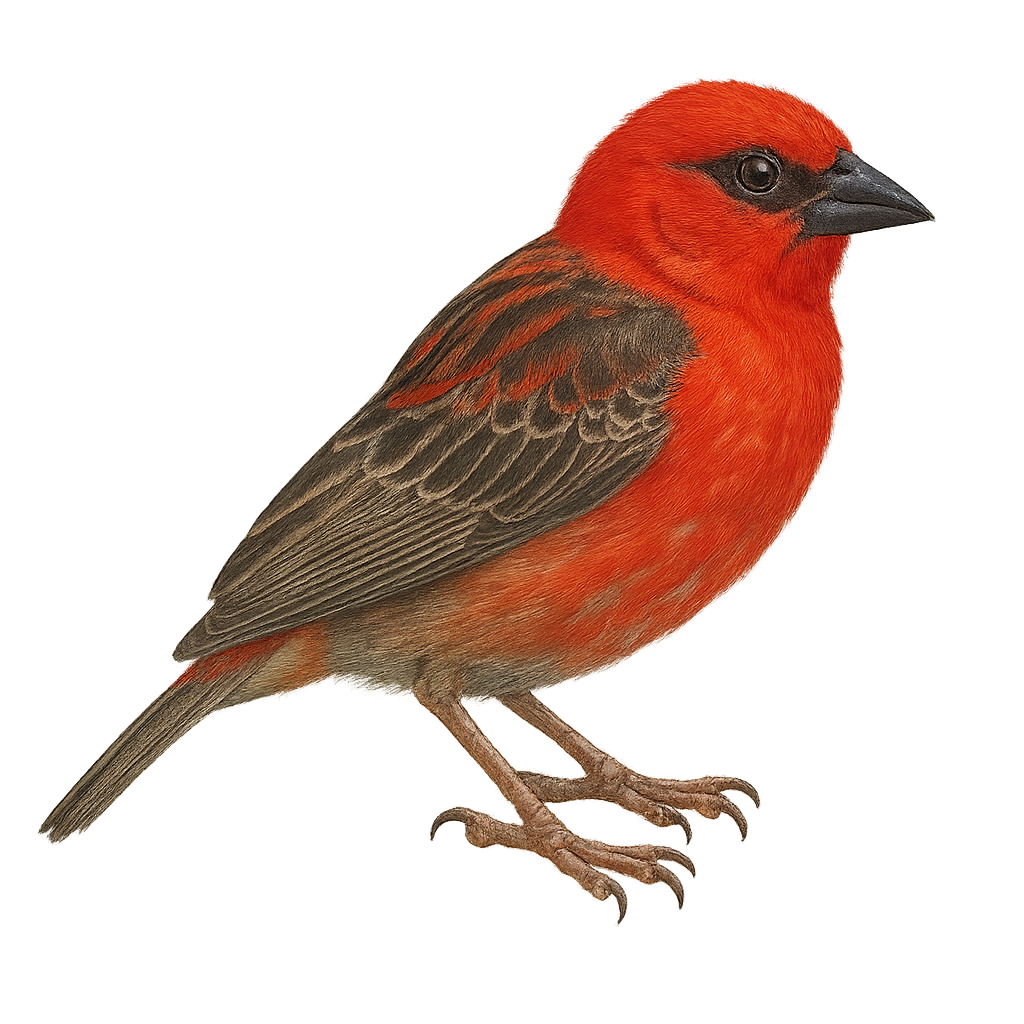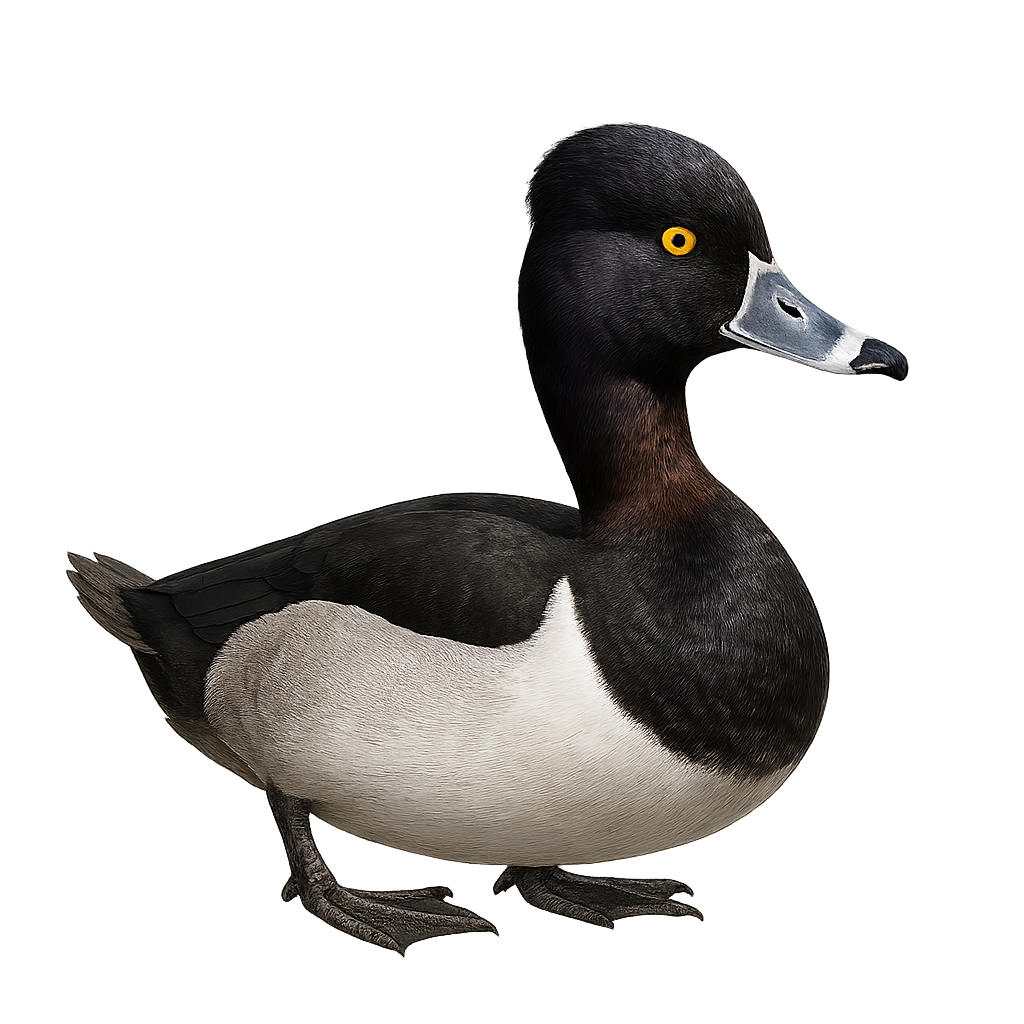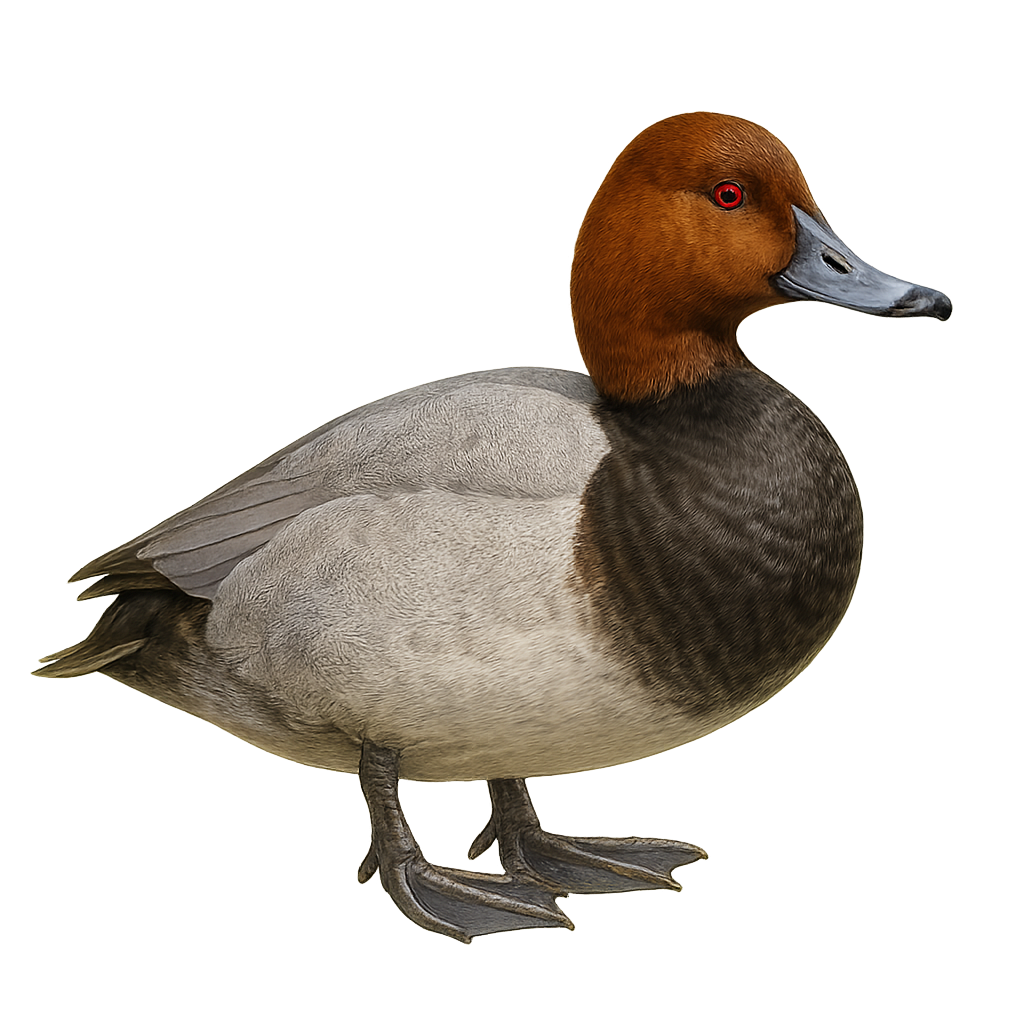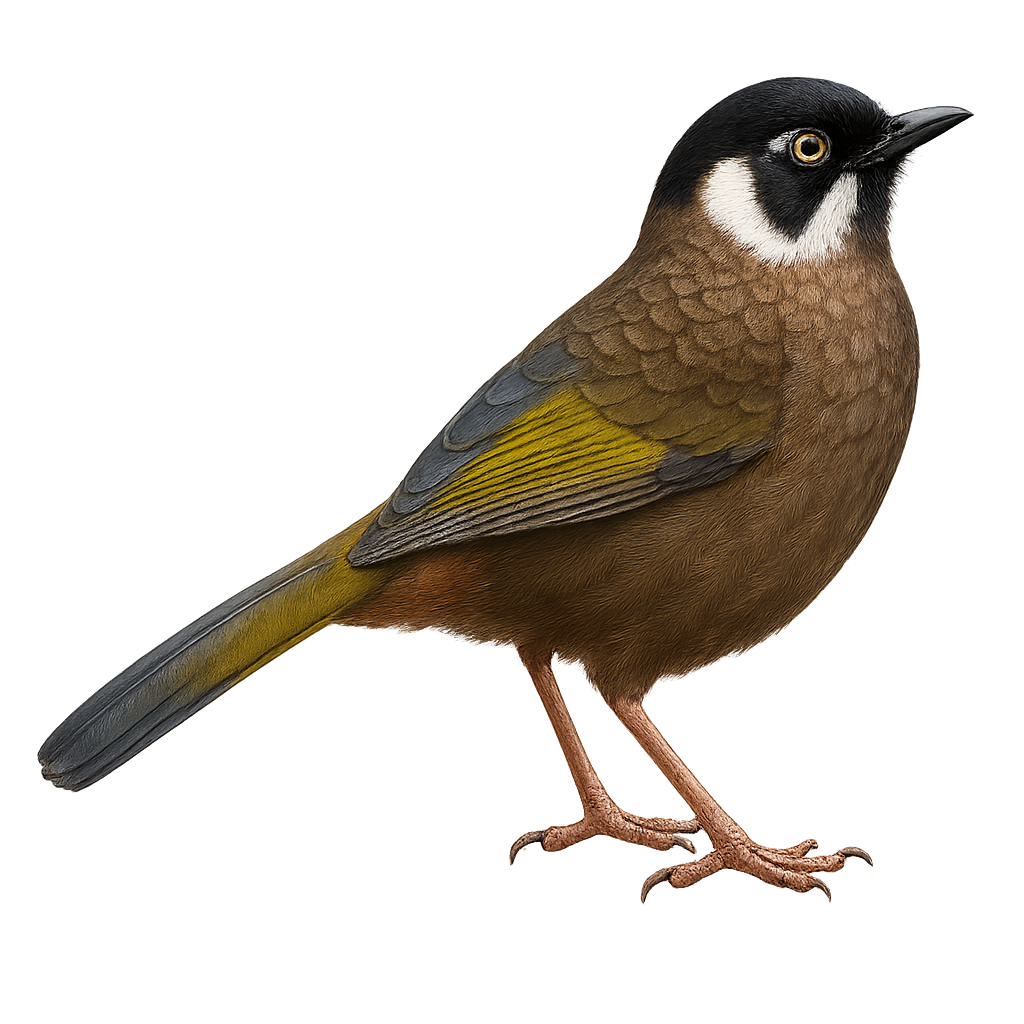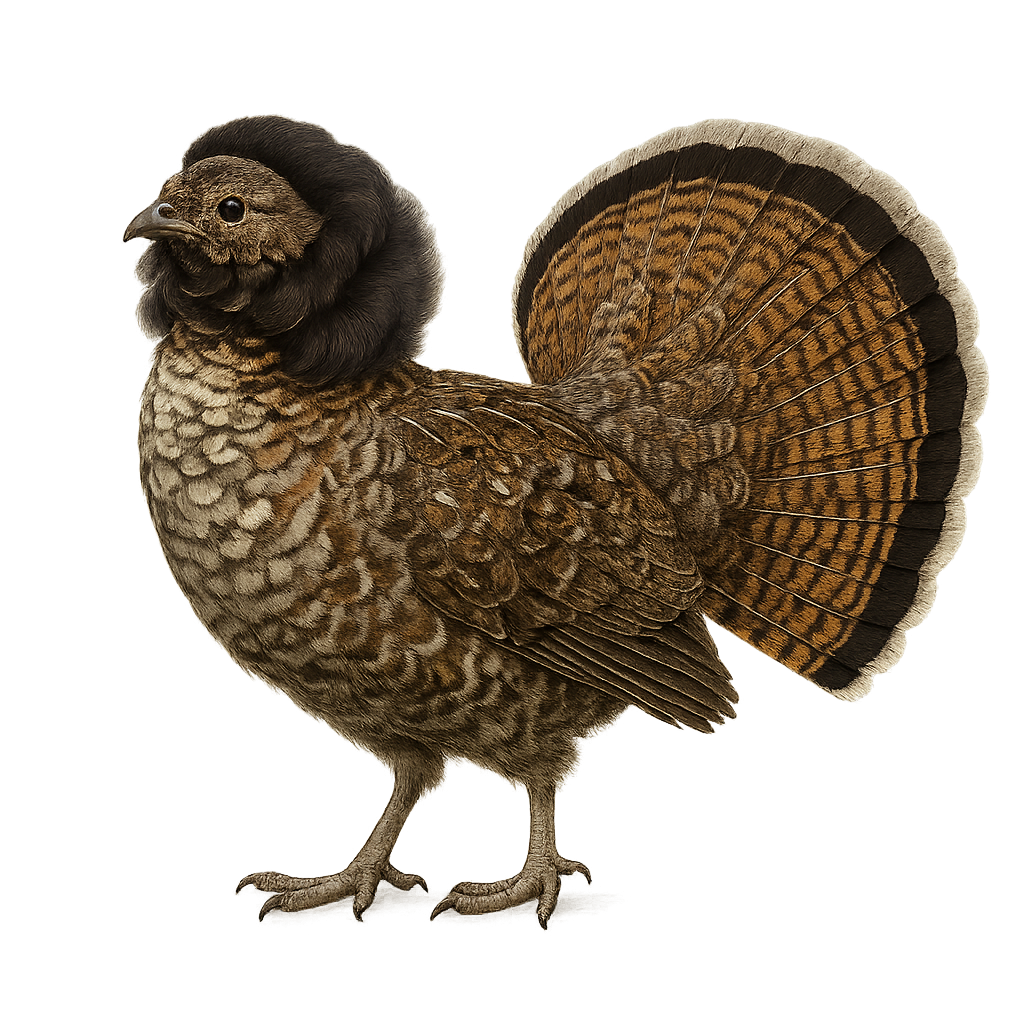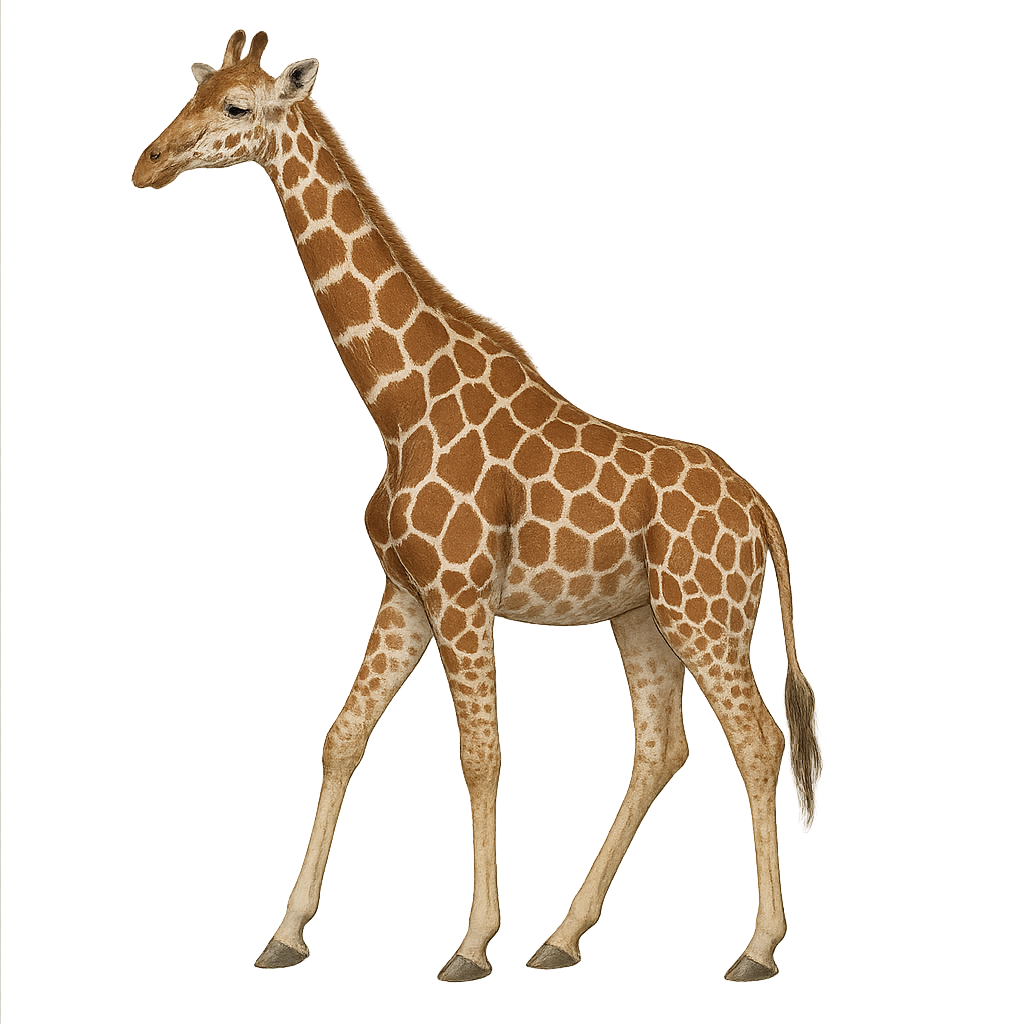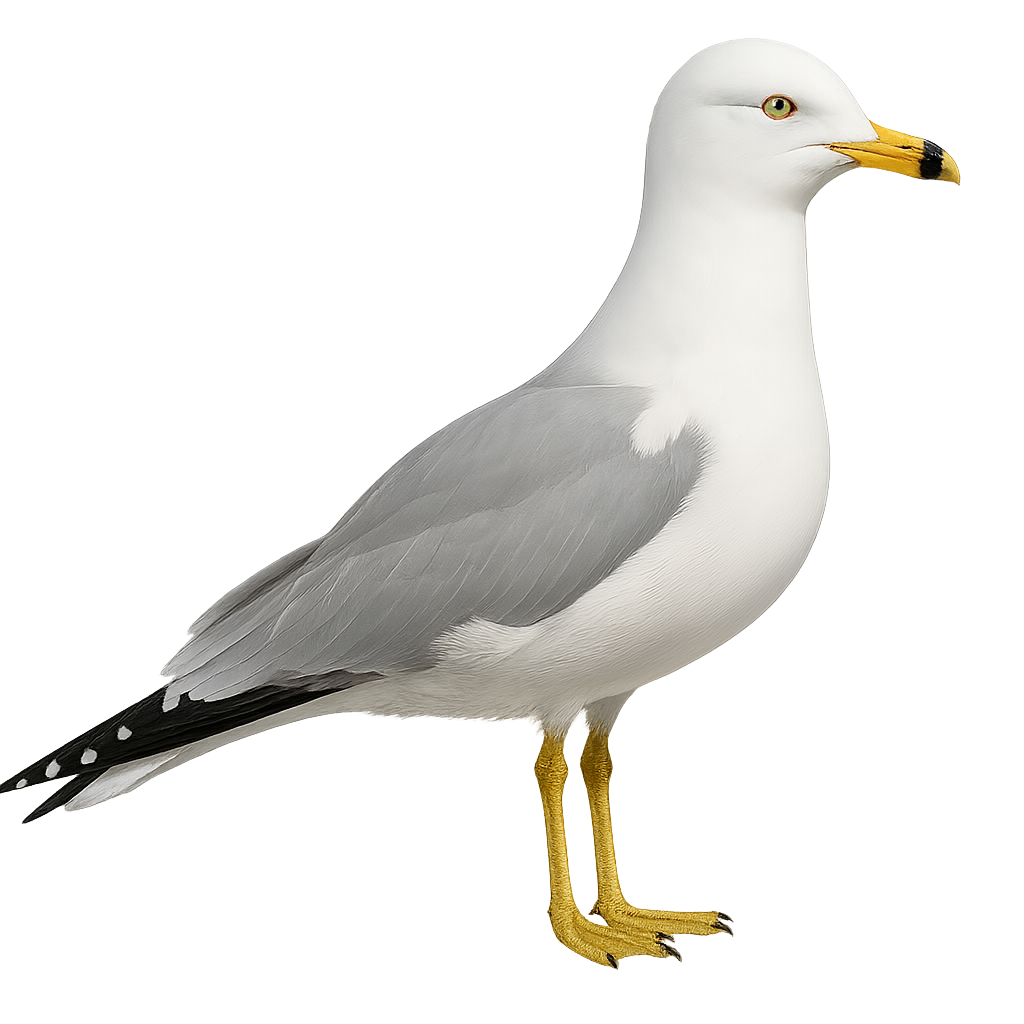The Red-faced Mousebird, or Urocolius indicus, is a fascinating bird from the Coliidae family, known for its distinctive red face and grey-brown plumage. It is primarily found in the arid and semi-arid regions of sub-Saharan Africa, where it moves in small groups. This bird measures about 34 cm in length, with a long tail that accounts for much of its total length. It feeds mainly on fruits, buds, and leaves, making it an important player in seed dispersal. The Red-faced Mousebird is a social bird, often seen sunbathing or grooming each other. Although it can fly, it often prefers to hop from branch to branch.
The Ruddy Quail-Dove, or Geotrygon montana, is a discreet, ground-dwelling bird found mainly in the tropical rainforests of Central and South America. It is recognizable by its reddish-brown plumage, distinctive black tail, and iridescent neck sheen. Measuring about 22 to 26 cm in length, it primarily feeds on seeds and fallen fruits. This bird is often solitary or in small groups and prefers walking to flying. Its soft, repetitive call is often heard at dawn and dusk. Although relatively common, its discreet nature makes it difficult to spot in its natural habitat.
The Ruff is a medium-sized wader bird, easily recognizable by its colorful plumage and relatively large size for a bird in its family. The male is particularly distinctive during the breeding season, with vibrant plumage ranging from brown and white to red and orange, and a large ruff that surrounds its head. Outside the breeding season, the male loses its bright colors and presents a more subdued plumage similar to the female.
This wader inhabits wetlands, marshes, and riverbanks across Europe and Asia. During the breeding season, males engage in spectacular courtship displays to attract females, including throat inflations and dances. The Ruff primarily feeds on small invertebrates and aquatic plants. It migrates south for the winter. While its population remains relatively stable, it is threatened by habitat loss due to the draining of wetlands and pollution.
The Rook, Corvus frugilegus, is a member of the crow family, easily identified by its glossy black plumage and strong beak. It is often seen in flocks in fields and meadows, feeding mainly on seeds, insects, and small animals. Known for its intelligence, the Rook can use tools to access food. It builds its nests high in trees, forming noisy colonies. Although commonly associated with rural areas, it adapts well to urban environments. Its presence is often seen as an indicator of ecological health, as it plays a crucial role in controlling insect populations.
The Red-cheeked Cordon-bleu is a small, vibrant bird known for its striking plumage and distinctive red cheeks. Native to sub-Saharan Africa, it inhabits savannas, shrublands, and gardens. Measuring about 12 cm in length, it is easily identified by its bright blue plumage and vivid red cheeks in males, while females have duller colors. Its melodious and soft song is often heard at dawn and dusk. This sociable bird lives in small groups and feeds mainly on seeds and insects. Its breeding is influenced by rainfall, and it builds dome-shaped nests in bushes.
The Red-faced Cormorant, or Urile urile, is a sleek seabird with glossy dark green plumage, a bluish neck, a yellowish bill, and striking red facial skin in adults. Breeding birds also show white patches on the sides of the rump. Juveniles are duller but often show a pale pink base to the bill. Found along rocky coastlines from Alaska’s Kenai Peninsula through the Aleutian and Pribilof Islands to Russia’s Kamchatka Peninsula, Kuril Islands, and northern Japan (Hokkaido). It breeds in colonies on steep cliffs and feeds on fish caught while diving. The population is stable but vulnerable to coastal habitat disturbances.
The Red-legged Cormorant is a distinctive seabird, recognizable by its red legs and slate-gray plumage. It primarily inhabits the rocky coasts of South America, from central Peru to southern Chile. This cormorant feeds mainly on fish, which it skillfully catches by diving underwater. It is often seen perched on rocks, drying its wings in the sun. Its population is considered vulnerable due to habitat degradation and overfishing, which reduces its food resources. Although relatively tolerant of human presence, it remains cautious and prefers less frequented areas.
The Rüppell's Robin-Chat, or Cossypha semirufa, is a medium-sized bird, measuring about 19 cm in length. It is distinguished by its striking plumage, with a slate-grey head and back, vivid rufous belly, and orange tail. This bird is primarily insectivorous, feeding on various insects and spiders, but it can also consume berries. It is often found in open forests, wooded savannas, and gardens, where it is known for its melodious and varied song. The Rüppell's Robin-Chat is a territorial bird, often seen alone or in pairs, and is particularly active at dusk and dawn.
Melanophryniscus stelzneri is a small, colorful toad native to South America, primarily found in Argentina and Brazil. Its skin is often black with red or yellow patterns, allowing it to blend into its natural environment. This toad is known for its unique defense behaviors, such as inflating its body to appear larger to predators. It prefers humid habitats like rainforests and wet grasslands, where it can hide under leaves and rocks. Although its population is stable, it is threatened by habitat loss due to agriculture and urbanization.
The Red-billed Chough, or Pyrrhocorax pyrrhocorax, is a member of the Corvidae family, easily identified by its glossy black plumage and bright red bill. It is commonly found in mountainous and coastal regions, feeding mainly on insects and small invertebrates. Known for its impressive aerial acrobatics and distinctive calls, this bird typically nests on cliffs or in abandoned buildings, forming noisy colonies. Although its range is extensive, it is locally threatened by habitat loss and human disturbances. Its presence often indicates the health of mountainous ecosystems.
The Rock Rattlesnake, or Crotalus lepidus, is a medium-sized venomous snake, typically measuring between 50 and 70 cm in length. It is characterized by its gray or brownish coloration, often marked with dark crossbands, allowing it to blend into its rocky environment. This snake is primarily found in the mountainous regions of the southwestern United States and northern Mexico. It prefers rocky and arid habitats, where it can easily hide. Although venomous, it is generally not aggressive towards humans and prefers to flee rather than bite.
The rock hyrax, or Procavia capensis, is a small herbivorous mammal found in Africa and the Middle East. It resembles a large rodent but is more closely related to elephants. Measuring about 50 cm in length and weighing 4 to 5 kg, it has dense brown fur, rounded ears, and short legs. Rock hyraxes live in colonies and are often seen basking on rocks. They communicate through a variety of calls and have a complex social structure. Although primarily herbivorous, they may also consume insects. Their adaptation to rocky environments allows them to evade many predators.
The Ranitomeya reticulata, commonly known as the reticulated poison frog, is a small, brightly colored frog native to the humid rainforests of South America, particularly in Peru and Ecuador. It is renowned for its vibrant skin, featuring a complex pattern of black reticulations on a bright yellow or orange background, making it a fascinating specimen for herpetologists and frog enthusiasts. This species is diurnal and primarily feeds on small insects and arthropods. Although its skin is toxic, it poses no threat to humans unless handled improperly. The Ranitomeya reticulata plays a crucial role in its ecosystem by regulating insect populations and serving as prey for certain predators.
The Russian Desman, or Desmana moschata, is a small semi-aquatic mammal belonging to the Talpidae family. It is primarily found in the wet regions of Russia and Ukraine. This peculiar animal has a long, flexible snout and a flattened tail, which allow it to move easily in water. Its dense, waterproof fur protects it from the cold, while its webbed feet facilitate swimming. The Russian Desman is a nocturnal animal, feeding mainly on aquatic insects, small fish, and crustaceans. Unfortunately, it is threatened by habitat destruction and water pollution, leading to a significant decline in its population.
The Red-browed Treecreeper, or Climacteris erythrops, is a bird endemic to Australia, primarily found in eucalyptus forests. It is recognized by its reddish-brown plumage and distinctive red eyebrows. Measuring about 17 cm, it is often seen climbing tree trunks in search of insects and spiders. Its song is a melodious trill, often heard at dusk. Although discreet, it is sometimes observed in small family groups. Its ability to blend into its environment makes it difficult to spot, but its curious behavior and distinctive song are valuable clues for attentive observers.
The Red-necked Nightjar is a fascinating nocturnal bird, primarily found in southern Europe and northern Africa. It is distinguished by its mottled brown plumage, which allows it to blend perfectly into its environment. Its rufous throat and long tail are characteristic features. This master of camouflage is often difficult to spot during the day, as it rests motionless on the ground or on low branches. It is most active at dusk and night, feeding mainly on insects caught in flight with its wide beak. Its soft, repetitive song is often heard during summer nights. Although its habitat is threatened by urbanization and intensive agriculture, it remains relatively common in some areas.
The Ridgway's Whip-poor-will is a discreet and mysterious bird, known for its cryptic plumage that allows it to blend seamlessly into its surroundings. Primarily nocturnal, it is often heard rather than seen, emitting melodious calls at dusk. It inhabits dry forests and open wooded areas, feeding mainly on flying insects caught in flight. Its ability to remain motionless for extended periods makes it difficult to spot. Although relatively tolerant of human presence, it prefers quiet, undisturbed habitats. Its breeding season coincides with the abundance of insects, ensuring ample food for its young.
The Ruddy Duck is a small diving duck with distinctive plumage. The male has a black head with a bright blue bill, a reddish-brown body, and often holds its tail upright. The female is more subdued, with brown plumage and subtler facial patterns. These ducks are commonly found in North American wetlands but have also been introduced to Europe. They prefer calm waters rich in vegetation, feeding mainly on aquatic plants, insects, and small crustaceans. Their behavior is generally not very shy, making them accessible for observation. They are known for their spectacular courtship displays, where the male shows off his blue bill and upright tail to attract the female.
The Rupununi Hermit, or Phaethornis rupurumii, is a fascinating hummingbird primarily inhabiting the humid forests and forest edges of South America, particularly in Brazil and Guyana. This small bird, measuring about 12 to 14 cm in length, is distinguished by its olive-brown plumage and long, tapered tail. Its curved beak is perfectly adapted for feeding on the nectar of tubular flowers. The Rupununi Hermit is a solitary bird, often observed darting quickly from flower to flower, playing a crucial role in the pollination of many tropical plants. Although its habitat is relatively stable, deforestation poses a potential threat to its population.
The Reeves's Pheasant, Syrmaticus reevesii, is a striking bird known for its vibrant plumage and exceptionally long tail, which can reach up to 2 meters in males. Native to the mountainous forests of central China, it is often found in diverse habitats ranging from mixed forests to open grasslands. Its plumage is predominantly golden with black and white patterns, making it easily recognizable. Males are particularly noted for their spectacular courtship display, where they fan out their tails and showcase their vivid colors to attract females. Although primarily terrestrial, the Reeves's Pheasant can fly short distances to evade predators.
The red-footed booby is a remarkable seabird, easily recognized by its red feet and its white and brown plumage. It primarily lives on tropical islands in the Pacific and Indian Oceans, where it nests on cliffs or trees near water. It feeds mainly on fish, which it catches by diving from heights. It is a social species living in colonies, but it faces threats due to habitat loss and human disturbances.
The Red Fody, or Foudia madagascariensis, is a small bird endemic to Madagascar, renowned for its striking plumage. Males display a vivid red color on the head and chest, contrasting with brownish wings and back, while females and juveniles are duller, with brownish hues and streaks. This bird measures about 15 cm in length and weighs between 14 and 19 grams. It is often seen in forests, agricultural areas, and even urban gardens. The Red Fody is a sociable bird, living in small groups, and primarily feeds on seeds, insects, and fruits. Its adaptability to various habitats makes it a resilient species, although it is sometimes threatened by the loss of its natural habitat.
The Ring-necked Duck, Aythya collaris, is a medium-sized diving duck known for its distinctive neck ring. Males display a striking black and gray plumage with a blue-gray bill marked by a white band, while females are browner with a white eye ring. They inhabit lakes and ponds across North America, feeding on aquatic plants, seeds, and invertebrates. Their flight is swift and direct, often in small flocks. Although generally wary, they can become accustomed to human presence in protected areas. Their population is stable, but habitat loss remains a potential threat.
The Redhead is a medium-sized diving duck, easily identified by its reddish head, pale blue bill, and gray body. Males have a bright red head, gray back, and white belly, while females are duller with a brownish head and gray-brown body. They inhabit lakes, ponds, and marshes, favoring shallow freshwater. Their diet mainly consists of aquatic plants, seeds, and insects. During breeding season, they often nest in wet meadows or lake islands. Their flight is fast and direct, and they are often seen in large flocks during migration.
The Rufous-chinned Laughingthrush is a medium-sized bird belonging to the Leiothrichidae family. It is primarily found in the mountainous forests of Southeast Asia, particularly in China, Myanmar, and Thailand. This bird is recognizable by its olive-brown plumage with shades of gray and rufous, especially around the throat and cheeks. It usually lives in groups and is known for its varied and melodious vocalizations. The Rufous-chinned Laughingthrush feeds mainly on insects, fruits, and seeds. Although it is relatively common in its natural habitat, deforestation poses a potential threat to its populations.
The Ruffed Grouse, Bonasa umbellus, is a medium-sized forest bird native to North America. It is easily identified by its mottled brown plumage, which provides excellent camouflage in its woodland habitat. Males are famous for their drumming display, a sound created by rapidly beating their wings, which echoes through the woods during the breeding season. This bird prefers mixed forests and dense wooded areas where it feeds on buds, leaves, and insects. Although generally solitary, the Ruffed Grouse can be seen in small groups outside the breeding season. Its ability to remain still and blend into its surroundings makes it a challenging subject for birdwatchers.
The Rufous-vented Ground Cuckoo, Neomorphus geoffroyi, is a rare and intriguing bird found in the tropical forests of Central and South America. It is recognizable by its rufous-brown plumage and distinctive long tail. This terrestrial bird prefers dense undergrowth where it moves stealthily in search of prey such as insects and small vertebrates. Although primarily ground-dwelling, it can fly short distances to escape predators. The Rufous-vented Ground Cuckoo is often heard before it is seen, thanks to its powerful and resonant calls. Its ability to blend into its environment makes it difficult to observe, adding to its mystery and appeal for birdwatchers.
The reticulated giraffe, or Giraffa camelopardalis reticulata, is a subspecies of giraffe known for its distinctive coat pattern of large polygonal patches separated by white lines. It is primarily found in northeastern Kenya, southern Ethiopia, and Somalia. Reticulated giraffes live in loose social groups and primarily feed on acacia leaves, which they reach with their long necks. They play a crucial role in their ecosystem by promoting tree growth and seed dispersal. Although majestic, they are vulnerable due to habitat loss and poaching. Their population is declining, leading to their classification as a vulnerable species by the IUCN.
The Rufous-gorgeted Flycatcher, Ficedula hyperythra, is a small passerine bird belonging to the Muscicapidae family. It is mainly found in the montane forests of Southeast Asia, particularly in India, Nepal, Thailand, and China. This bird is distinguished by its characteristic rufous throat, contrasting with its bluish-grey back and white belly. It is often seen alone or in pairs, feeding on insects caught in flight. The Rufous-gorgeted Flycatcher is a migratory bird, moving to lower altitudes during winter. It is appreciated by birdwatchers for its melodious song and its ability to adapt to different forest habitats.
The Ring-billed Gull, Larus delawarensis, is a medium-sized bird easily identified by its yellow bill with a distinctive black ring. Its plumage is primarily white with gray wings and black wingtips. It often frequents coastal areas, lakes, and rivers, but can also be found in urban areas, where it adapts well to human presence. This gull is known for its piercing call and social behavior, often seen in large groups. Opportunistic, it feeds on fish, insects, small mammals, and human waste. Its ability to adapt to various environments makes it a widely distributed species in North America.


